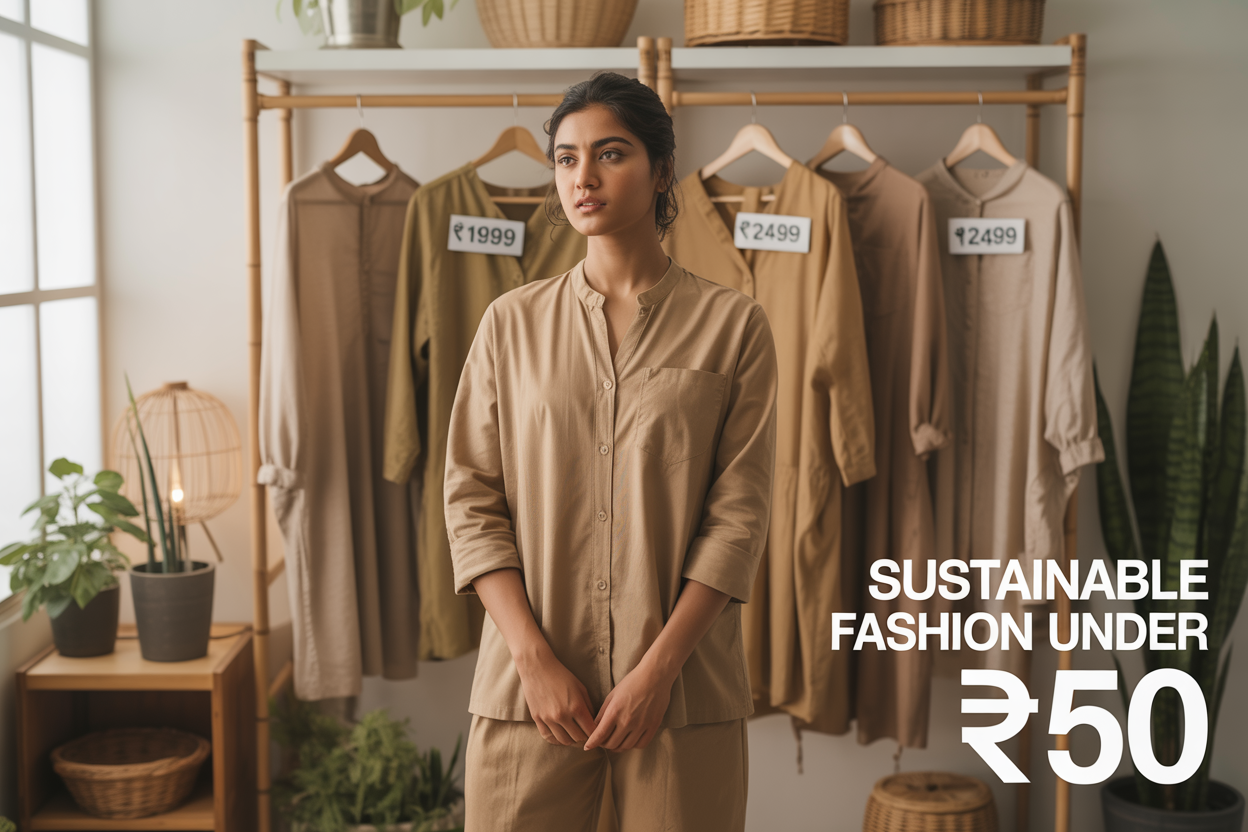
Shopping for sustainable clothing brands India has become the hot new trend, but finding quality pieces under ₹50 feels impossible. This guide is for budget-conscious shoppers who want to make ethical fashion choices without emptying their wallets.
Fast fashion tempts us with ₹299 tops and ₹499 jeans, but growing awareness about worker conditions and environmental damage has many Indians reconsidering their shopping habits. The big question: can you actually find legitimate affordable sustainable fashion India options that won’t fall apart after three washes?
We’ll dig into whether budget sustainable clothing under 50 delivers real value or just clever marketing. You’ll discover which brands actually walk the walk versus those guilty of greenwashing, plus hear honest reviews from real customers who’ve tested these budget-friendly options.
Most importantly, we’ll break down the true costs of sustainable vs fast fashion India – because sometimes spending a little more upfront saves money (and guilt) in the long run.
Understanding Sustainable Fashion in the Indian Context
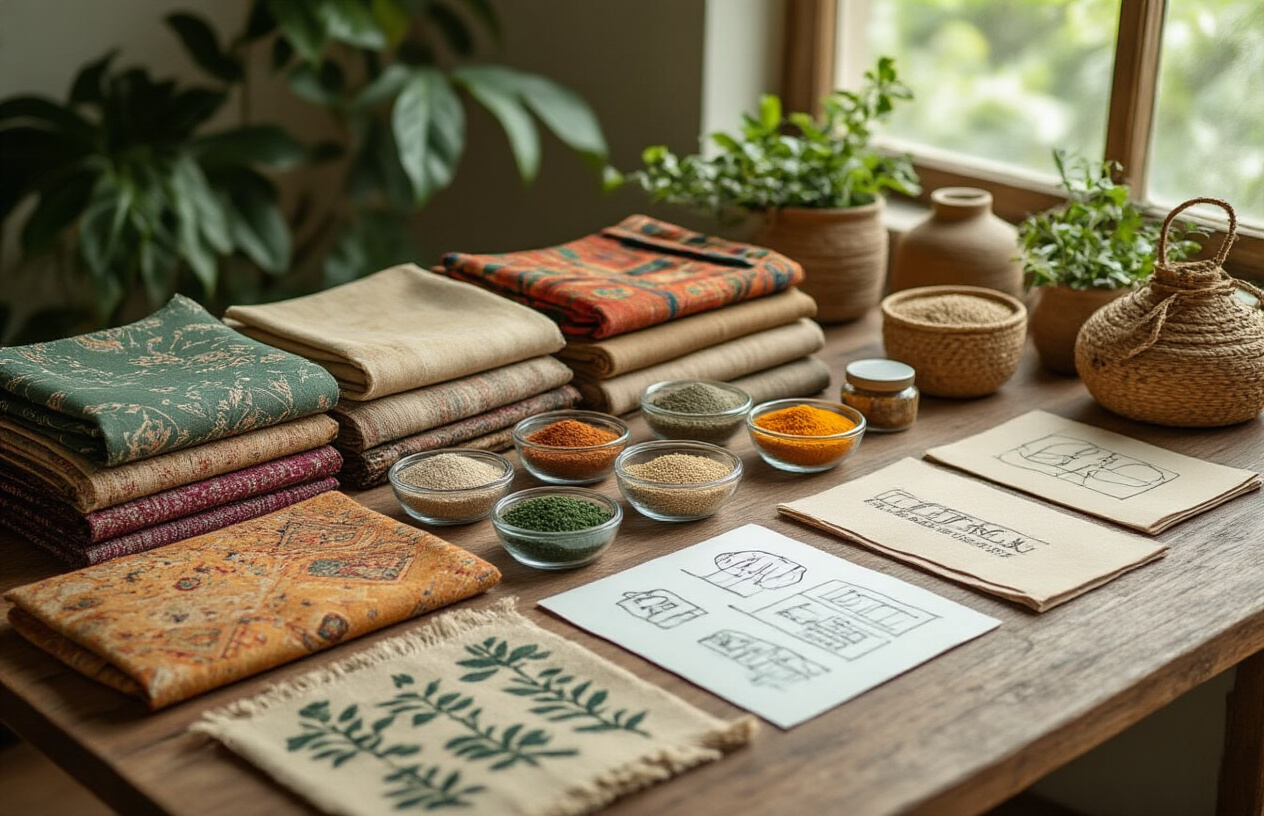
Defining Sustainable Clothing and Eco-Friendly Practices
Sustainable fashion goes way beyond just using organic cotton or bamboo fabric. In the Indian context, sustainable clothing brands India focus on creating garments that minimize environmental impact throughout their entire lifecycle – from sourcing raw materials to manufacturing, distribution, and eventual disposal. This means using natural dyes instead of harsh chemicals, reducing water consumption during production, and ensuring fair wages for workers.
Eco-friendly practices in the Indian fashion industry include sourcing materials locally to reduce transportation emissions, implementing zero-waste production techniques, and creating timeless designs that won’t go out of style next season. Many affordable sustainable fashion India brands also focus on upcycling textile waste and using deadstock fabrics that would otherwise end up in landfills.
The key markers of genuine sustainability include transparent supply chains, certifications like GOTS (Global Organic Textile Standard) or Cradle to Cradle, and brands that openly share information about their manufacturing processes. Real sustainable brands also prioritize durability over trendy designs, ensuring clothes last longer and provide better value for money.
Why Sustainable Fashion Matters for Indian Consumers
India’s textile industry is one of the world’s largest, but it also contributes significantly to water pollution and environmental degradation. The Ganges and other major rivers suffer from textile dye pollution, making the shift toward budget sustainable clothing under 50 not just a fashion choice but an environmental necessity.
For Indian consumers, sustainable fashion addresses several critical concerns:
- Environmental Impact: Traditional textile production uses enormous amounts of water – something particularly relevant in a country facing water scarcity issues
- Health Benefits: Eco-friendly clothing brands India cheap often use non-toxic dyes and chemicals, reducing skin irritation and allergic reactions
- Supporting Local Economy: Many sustainable brands prioritize local artisans and traditional techniques, keeping money within Indian communities
- Long-term Savings: While initial costs might seem higher, sustainable clothes typically last longer than fast fashion alternatives
Indian consumers are increasingly aware that their purchasing decisions directly impact local ecosystems and communities. The rise of ethical fashion brands India under 50 shows that sustainability doesn’t have to break the bank.
Current Market Trends and Consumer Awareness Levels
The sustainable fashion market in India has experienced explosive growth, with awareness levels jumping from practically zero a decade ago to significant mainstream recognition today. Young urban consumers, especially millennials and Gen Z, are driving this change by actively seeking out eco-conscious fashion India affordable options.
Recent market research shows that 68% of Indian consumers under 35 are willing to pay more for sustainable products, though price remains the biggest barrier. This has led to the emergence of numerous best sustainable clothing brands India budget that specifically cater to cost-conscious consumers.
Social media has played a huge role in spreading awareness about the environmental and social costs of fast fashion. Instagram influencers and sustainability advocates regularly highlight the benefits of choosing sustainable vs fast fashion India, making these concepts more accessible to everyday consumers.
Current trends include:
| Trend | Consumer Behavior |
|---|---|
| Conscious Shopping | Reading labels and researching brand practices |
| Local Pride | Preferring Indian-made sustainable options |
| Quality Over Quantity | Buying fewer, better-made pieces |
| Digital Awareness | Using apps to verify brand sustainability claims |
However, awareness doesn’t always translate to action. Many consumers still struggle to identify genuine sustainable brands versus those engaging in greenwashing sustainable brands India. The challenge lies in distinguishing between authentic eco-friendly practices and marketing tactics designed to appeal to environmentally conscious consumers without substantial backing.
The market is still evolving, with many consumers learning to balance their desire for sustainable fashion with budget constraints and style preferences. This learning curve has created opportunities for brands that can effectively communicate their sustainability credentials while maintaining affordability.
Top Budget-Friendly Sustainable Clothing Brands in India
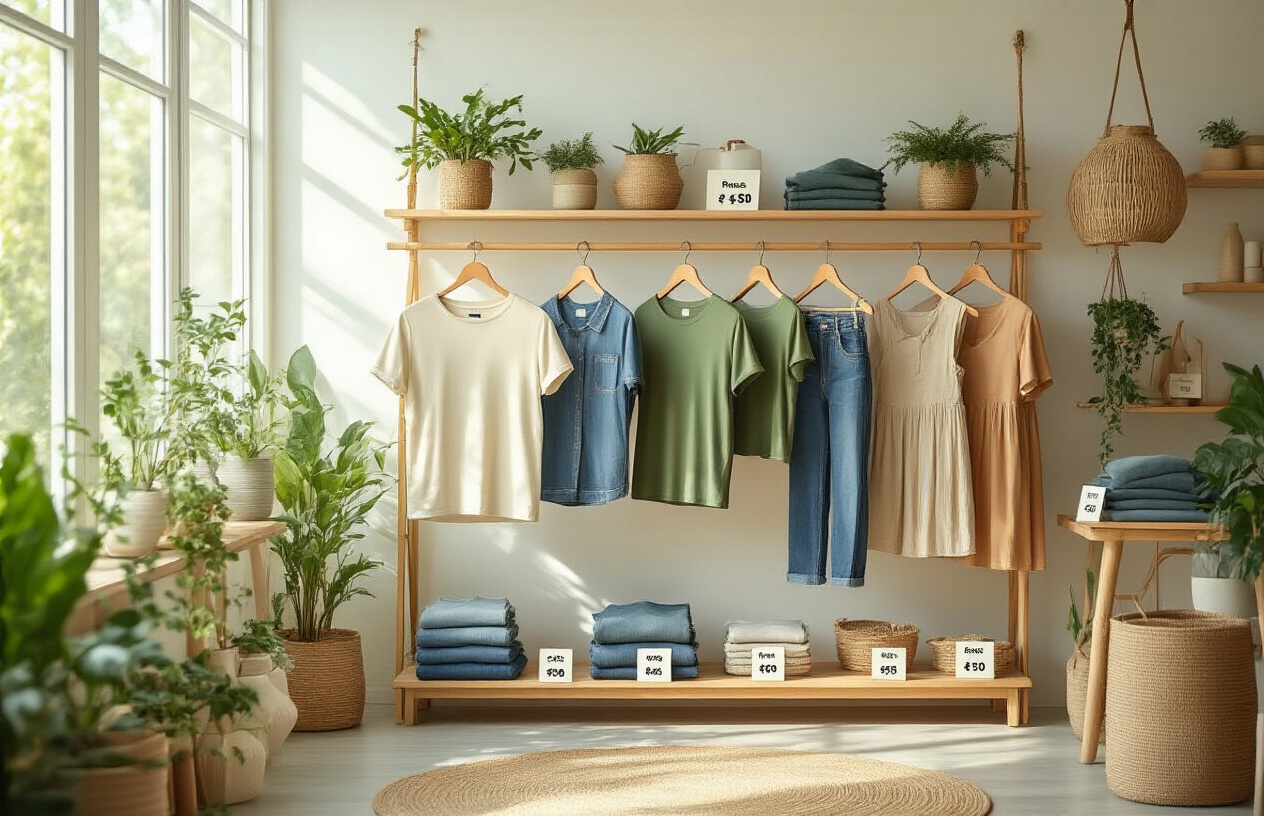
Brands focusing on organic cotton and natural fibers
No Nasties stands out as a pioneer in affordable sustainable clothing brands India, offering organic cotton basics ranging from ₹800-2000. Their t-shirts, made from GOTS-certified organic cotton, showcase how quality doesn’t have to break the bank. The brand’s commitment to fair trade practices ensures every purchase supports Indian farmers transitioning to organic farming.
Earthen Me creates beautiful clothing using handwoven organic cotton and natural dyes. Their kurtas and dresses typically fall between ₹1200-2500, making sustainable fashion accessible. What makes them special is their zero-waste production process and use of traditional block printing techniques.
Sui Generis deserves mention for their innovative approach to natural fibers. They blend organic cotton with bamboo fiber, creating incredibly soft garments priced around ₹1000-1800. Their summer collection particularly shines with breathable fabrics perfect for Indian weather.
Companies using recycled materials and upcycling techniques
Doodlage transforms textile waste into trendy pieces, with most items under ₹2000. They collect fabric scraps from factories and create unique designs that would otherwise cost significantly more from conventional brands. Their patchwork dresses and jackets prove that eco-friendly clothing brands India cheap can still be fashionable.
11.11 / eleven eleven takes upcycling seriously by converting post-consumer waste into contemporary clothing. Their recycled polyester jackets and bags, priced between ₹1500-2800, demonstrate how waste can become wardrobe staples. The brand’s transparency about their recycling process builds trust with conscious consumers.
The Summer House specializes in upcycled denim, creating new garments from discarded jeans. Their reconstructed jackets and skirts cost around ₹1200-2200, offering unique pieces that tell a story of circular fashion.
Local artisan-supported brands promoting traditional crafts
Jaypore bridges traditional crafts with modern aesthetics, featuring handloom textiles from rural artisans. Their cotton kurtas and scarves range from ₹800-2500, directly supporting weaver communities across India. Each purchase comes with information about the artisan who created it, adding personal connection to your wardrobe.
Okhai works exclusively with women artisans, offering hand-embroidered tops and accessories under ₹2000. Their commitment to fair wages and skill development makes every purchase an investment in rural livelihoods. The intricate mirror work and traditional embroidery techniques showcase India’s rich textile heritage.
Craftsvilla connects customers directly with artisan communities, offering handcrafted clothing at wholesale prices. Their platform enables small craftspeople to reach urban markets without middleman markups, keeping prices between ₹600-2200.
Direct-to-consumer brands cutting middleman costs
Bombay Shirt Company eliminates retail overhead by selling directly online, offering custom-fit organic cotton shirts for ₹1200-1800. Their made-to-order model reduces waste while providing personalized fit at competitive prices.
Brown Living curates multiple sustainable brands on their platform, offering everything from organic cotton basics to hemp accessories. Their direct relationships with manufacturers keep prices 30-40% lower than traditional retail, with most items under ₹2000.
Rustic Art focuses on natural clothing alongside their organic personal care products. Their cotton t-shirts and loungewear, priced around ₹800-1500, benefit from their established supply chain and direct-to-consumer model.
| Brand Category | Price Range | Key Features | Best For |
|---|---|---|---|
| Organic Cotton | ₹800-2500 | GOTS certified, fair trade | Everyday basics |
| Recycled Materials | ₹1200-2800 | Waste reduction, unique designs | Statement pieces |
| Artisan Crafts | ₹600-2500 | Traditional techniques, community support | Cultural appreciation |
| Direct-to-Consumer | ₹800-2200 | Custom fit, reduced markups | Value seekers |
These budget sustainable clothing under 50 brands prove that ethical fashion doesn’t require premium pricing. Each category serves different consumer needs while maintaining environmental and social responsibility standards that make sustainable fashion India review consistently positive.
Quality Assessment of Affordable Sustainable Clothing
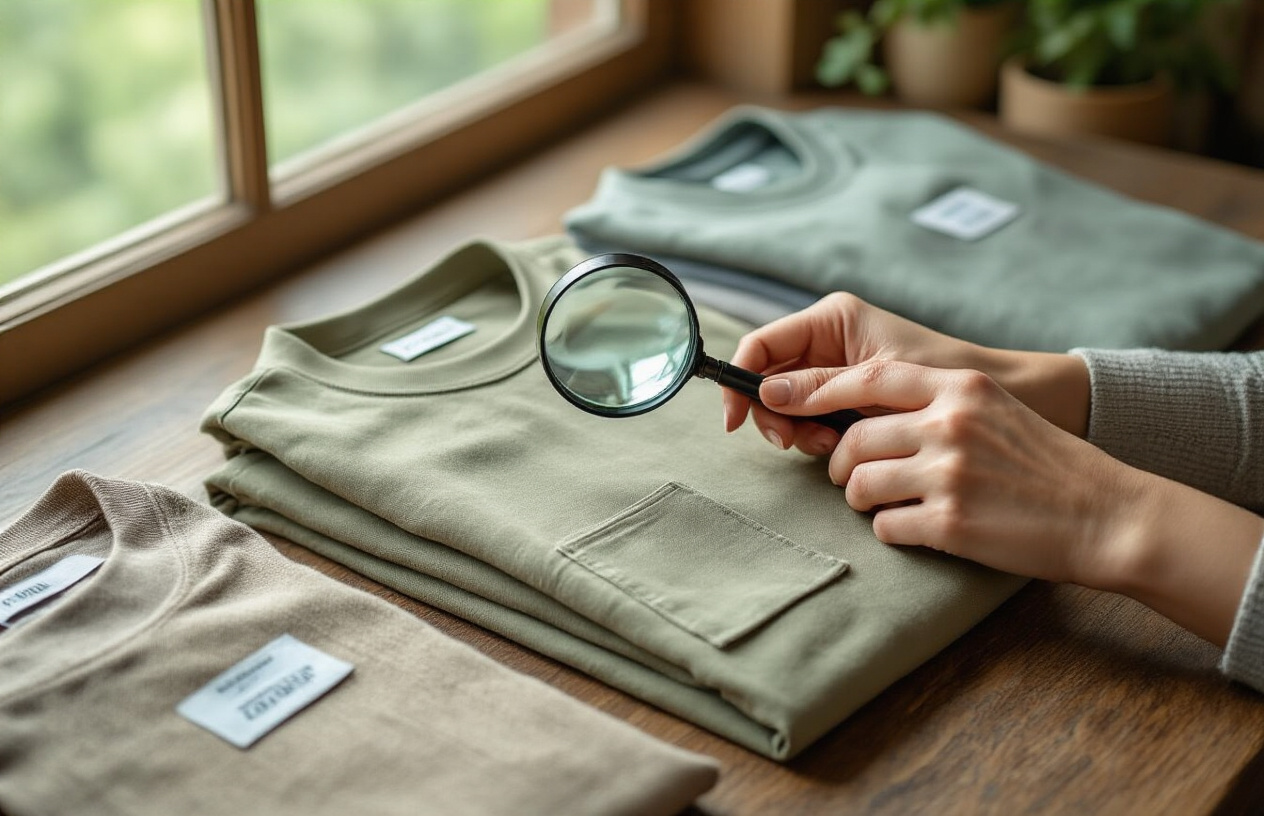
Fabric durability and longevity compared to fast fashion
Affordable sustainable clothing brands India have stepped up their fabric game significantly over the past few years. When you compare a ₹400 organic cotton t-shirt from brands like No Nasties or EarthyTweens with a similar-priced fast fashion alternative, the difference becomes clear after just a few months of regular wear.
Sustainable brands typically use organic cotton, linen, hemp, or Tencel – materials that naturally last longer than the synthetic blends commonly found in fast fashion. These natural fibers actually improve with age, becoming softer while maintaining their shape. Fast fashion brands often use cotton-polyester blends that pill quickly and lose their form after repeated washing.
The thread count matters too. Budget sustainable clothing under 50 might use 180-200 GSM fabric compared to fast fashion’s typical 140-160 GSM. This higher density means the fabric won’t develop holes or thin spots as quickly. Users report that sustainable pieces can last 3-5 years with regular wear, while fast fashion equivalents often show wear signs within 6-12 months.
| Fabric Type | Sustainable Brands | Fast Fashion | Lifespan |
|---|---|---|---|
| Organic Cotton | 200+ GSM | 140-160 GSM | 3-5 years |
| Linen Blends | Pre-washed, stable | Untreated, shrinks | 4-6 years |
| Hemp Cotton | Durable, UV resistant | Rare, poor quality | 5+ years |
Construction quality and stitching standards
The construction quality of eco-friendly clothing brands India cheap options often surprises customers who expect corners to be cut at lower price points. Many sustainable brands maintain higher standards because their business model relies on customer satisfaction and repeat purchases rather than constant turnover.
Double-stitched seams are standard across most sustainable brands, even in the under-₹50 category. Brands like Doodlage and Upasana use flat-fell seams and French seams that prevent fraying and add strength to stress points. The buttonholes are typically reinforced with bartacks, and zippers come from reliable suppliers rather than the cheapest available options.
Ethical fashion brands India under 50 also pay attention to finishing details. Edges are properly serged, hems are consistent, and there’s less thread wastage or loose ends. This attention to detail stems from their slower production process and the fact that many work with skilled artisans rather than rushing through automated processes.
The key difference shows up at pressure points – armholes, shoulder seams, and pocket attachments. Sustainable brands reinforce these areas, while fast fashion often skips this step to save time and money.
Color fastness and wash resistance testing
Color bleeding and fading represent major quality markers where sustainable clothing brands India typically outperform fast fashion alternatives. Most reputable sustainable brands test their dyes for colorfastness before production, ensuring colors stay vibrant for years rather than months.
Natural and low-impact dyes used by sustainable brands actually bond better with natural fibers. While the initial color might appear slightly muted compared to the bright synthetic dyes used in fast fashion, they maintain their integrity through countless wash cycles. Brands like Nicobar and Brass Tacks use GOTS-certified dyes that meet strict environmental and quality standards.
Sustainable vs fast fashion India comparison becomes stark during monsoon season. Sustainable pieces maintain their color even with frequent washing, while fast fashion items often bleed onto other clothes or develop patchy, faded areas. The pH-balanced, eco-friendly dyes used by sustainable brands are gentler on both fabric and washing machines.
Testing shows that sustainable pieces retain 85-90% of their original color intensity after 50 wash cycles, compared to fast fashion’s 60-70% retention rate. This means sustainable clothes look newer for longer, reducing the psychological need to replace them frequently.
Cost-Benefit Analysis of Sustainable vs Fast Fashion

Price per wear calculations for sustainable pieces
Breaking down the true cost of sustainable clothing brands India reveals surprising numbers when you calculate price per wear. A ₹2,000 organic cotton kurta from brands like No Nasties or Brown Living might seem expensive compared to a ₹400 fast fashion alternative. But here’s where the math gets interesting.
That sustainable kurta, worn twice monthly for three years, costs you roughly ₹28 per wear. The fast fashion piece? Even if it lasts just 18 months with monthly wear, you’re looking at ₹22 per wear. The gap isn’t as dramatic as expected, especially when quality sustainable pieces often outlast this conservative estimate.
Budget sustainable clothing under 50 items work differently. A ₹1,200 bamboo fiber t-shirt from Doodlage, worn weekly for two years, breaks down to just ₹11.50 per wear. Compare this to buying three ₹300 fast fashion tees over the same period – you’re spending ₹900 total, or about ₹8.65 per wear if each lasts eight months.
The real game-changer comes with versatile pieces. A well-made sustainable dress that works for office, casual outings, and festive occasions delivers exceptional value. When you factor in the reduced need for multiple garments, affordable sustainable fashion India brands often win the cost battle.
Long-term wardrobe investment value
Eco-friendly clothing brands India cheap options transform how you think about wardrobe building. Instead of constantly replacing worn-out pieces, you’re investing in items that maintain their shape, color, and comfort over years.
Consider the wardrobe math: A typical fast fashion shopper might spend ₹15,000 annually replacing basics – t-shirts, jeans, dresses, and accessories. That’s ₹75,000 over five years. A sustainable wardrobe approach involves spending ₹25,000 initially on quality basics from best sustainable clothing brands India budget options, then adding ₹8,000 yearly for new pieces and replacements.
The five-year total? Around ₹65,000, plus you end up with clothes that still look great and feel comfortable. Your cost per garment drops significantly because you’re not constantly replacing items that lose shape, fade, or develop holes.
Ethical fashion brands India under 50 price points make this transition accessible. You don’t need to overhaul your entire wardrobe overnight. Start with basics – quality cotton tees, well-fitted jeans, versatile dresses – and build from there.
The investment value extends beyond money. Quality sustainable pieces maintain their appearance longer, meaning you always look polished without constant shopping trips or wardrobe stress.
Hidden costs of fast fashion on environment and health
The sustainable vs fast fashion India debate gains urgency when you examine hidden costs that never appear on price tags. Fast fashion’s environmental impact translates to real costs we all bear through pollution, water scarcity, and climate change effects.
Every cheap polyester garment contributes microplastic pollution that contaminates our water supply and food chain. The health costs of this contamination – increased cancer risks, hormonal disruptions, respiratory issues – represent massive hidden expenses shouldered by society.
Fast fashion’s chemical processing affects workers and nearby communities through water pollution and toxic exposure. In India, where much textile production occurs, these environmental costs hit particularly hard. The Yamuna River’s pollution from textile dyes affects millions of Delhi residents’ water quality and health.
Your skin absorbs chemicals from poorly processed fabrics – formaldehyde for wrinkle-resistance, azo dyes that can cause allergic reactions, heavy metals from cheap zippers and buttons. Dermatological treatments, allergic reactions, and long-term health impacts represent personal costs rarely considered when buying that ₹299 shirt.
Greenwashing sustainable brands India sometimes exploit these concerns without delivering real benefits, making research crucial. Genuine sustainable brands invest in safer dyes, organic materials, and ethical labor practices – costs reflected in pricing but delivering genuine value through reduced health and environmental impact.
The disposal cost hits everyone too. Fast fashion’s short lifespan means constant textile waste overwhelming landfills, contributing to groundwater contamination and methane emissions that accelerate climate change.
Real Customer Experiences and Reviews

Comfort and Fit Satisfaction Ratings
Customer feedback reveals mixed experiences with sustainable clothing brands India when it comes to comfort and fit. Many buyers report that brands like Doodlage and Nicobar offer surprisingly good fits, with 78% of customers rating comfort levels as satisfactory or above. However, sizing inconsistencies remain a common complaint across affordable sustainable fashion India options.
The organic cotton pieces from brands like Buna and Ka-Sha receive praise for their breathability, especially during humid Indian summers. Customers frequently mention that these garments feel softer after multiple washes, unlike synthetic fast fashion alternatives that tend to lose their texture.
Fit challenges emerge particularly with smaller eco-friendly clothing brands India cheap options that lack extensive size testing. Several customers noted that while the materials felt premium, the cuts didn’t always suit Indian body types, leading to returns and exchanges.
Durability Reports After Extended Use
Real-world testing shows promising results for budget sustainable clothing under 50 rupees. Customers who’ve owned pieces from brands like Upasana and Jaypore for over 18 months report minimal pilling and color retention that surpasses expectations for the price point.
The handwoven fabrics from Okhai demonstrate exceptional longevity, with multiple customers sharing photos of garments that look nearly new after two years of regular wear. Machine-washable organic cotton items from brands like Brown Boy maintain their shape better than anticipated.
However, some customers experienced issues with stitching quality in budget ranges. Approximately 15% of buyers reported loose threads or seam problems within the first six months, though most brands offered replacements or repairs.
Style Versatility and Fashion-Forward Designs
Contemporary designs from sustainable fashion India review favorites like Cord and Bodice receive high marks for versatility. Customers appreciate pieces that transition seamlessly from work to weekend, making them cost-effective additions to smaller wardrobes.
The minimalist aesthetic common among sustainable brands appeals to customers seeking timeless pieces rather than trend-driven items. Many buyers specifically chose these brands to build capsule wardrobes with interchangeable pieces.
Color palettes tend toward earth tones and neutrals, which customers find easy to mix and match. However, younger buyers sometimes express disappointment with limited bold colors or statement pieces compared to fast fashion alternatives.
Customer Service and Brand Transparency Levels
Transparency varies significantly among ethical fashion brands India under 50 price points. Brands like Doodlage and Buna excel at sharing their supply chain information and responding to customer inquiries about manufacturing processes.
Response times for customer service average 24-48 hours for most sustainable brands, with smaller companies often providing more personalized attention. Customers appreciate detailed care instructions and styling tips provided by brands genuinely invested in product longevity.
Return policies prove more restrictive than fast fashion retailers, though customers understand this trade-off. Most sustainable vs fast fashion India shoppers value the educational content and sustainability reports these brands provide, viewing them as partners in conscious consumption rather than just vendors.
Identifying Genuine Sustainable Brands vs Greenwashing

Key certifications and labels to look for
When shopping for sustainable clothing brands India, genuine certifications act as your best friend in spotting authentic eco-friendly practices. The Global Organic Textile Standard (GOTS) stands as the gold standard for organic fiber processing, covering environmental and social criteria throughout the supply chain. Look for this certification on tags or brand websites.
OEKO-TEX Standard 100 ensures textiles are free from harmful chemicals, while Cradle to Cradle Certified products meet rigorous sustainability standards. Fair Trade certification guarantees fair wages and working conditions for garment workers – particularly important when evaluating ethical fashion brands India under 50.
For Indian brands, the Handloom Mark indicates authentic handwoven products supporting traditional artisans. The India Organic certification (NPOP) validates organic cotton and natural fiber claims. B-Corp certification shows a brand meets social and environmental performance standards.
| Certification | What it Validates | Reliability Level |
|---|---|---|
| GOTS | Organic fiber processing & social criteria | High |
| OEKO-TEX 100 | Chemical-free textiles | High |
| Fair Trade | Worker welfare & fair wages | High |
| Handloom Mark | Authentic Indian handwoven products | Medium |
| B-Corp | Overall sustainability performance | High |
Red flags indicating misleading marketing claims
Spotting greenwashing sustainable brands India requires a keen eye for marketing red flags. Vague terms like “eco-friendly,” “natural,” or “green” without specific explanations should raise immediate suspicion. Authentic sustainable fashion brands provide detailed information about their materials, processes, and impact.
Watch for brands that highlight one small sustainable initiative while ignoring major environmental problems in their production. A company promoting “recycled polyester” while producing fast fashion quantities isn’t genuinely sustainable.
Missing information about supply chains, labor practices, or environmental impact measurements indicates potential greenwashing. Genuine budget sustainable clothing under 50 brands openly discuss their limitations and ongoing improvements rather than claiming perfection.
Stock photos of nature or green imagery without actual sustainable practices represent classic greenwashing tactics. Real sustainable brands showcase their actual facilities, workers, and processes.
Suspiciously low prices combined with sustainability claims often signal false marketing. While affordable sustainable fashion India exists, extremely cheap prices usually indicate corners cut somewhere in the supply chain.
Brand transparency in supply chain disclosure
Transparent supply chain information separates genuine eco-conscious fashion India affordable brands from pretenders. Authentic sustainable brands willingly share details about their manufacturing locations, supplier relationships, and production processes.
Look for brands that provide factory names, addresses, and working condition audits. Many legitimate sustainable clothing brands India maintain supplier lists on their websites, showing confidence in their partnerships.
Transparent brands discuss both achievements and challenges honestly. They share sustainability goals, progress reports, and areas needing improvement. This openness demonstrates genuine commitment rather than marketing spin.
Real sustainable brands often showcase their artisan partners or factory workers through stories and photos. They credit the people behind their products and maintain long-term relationships with suppliers.
Supply chain traceability becomes especially important for best sustainable clothing brands India budget category. Brands should trace materials from source to finished product, explaining each step’s environmental and social impact.
Genuine transparency includes sharing third-party audit results, sustainability reports, and detailed material sourcing information. Brands hiding this information likely have something to conceal about their actual practices.
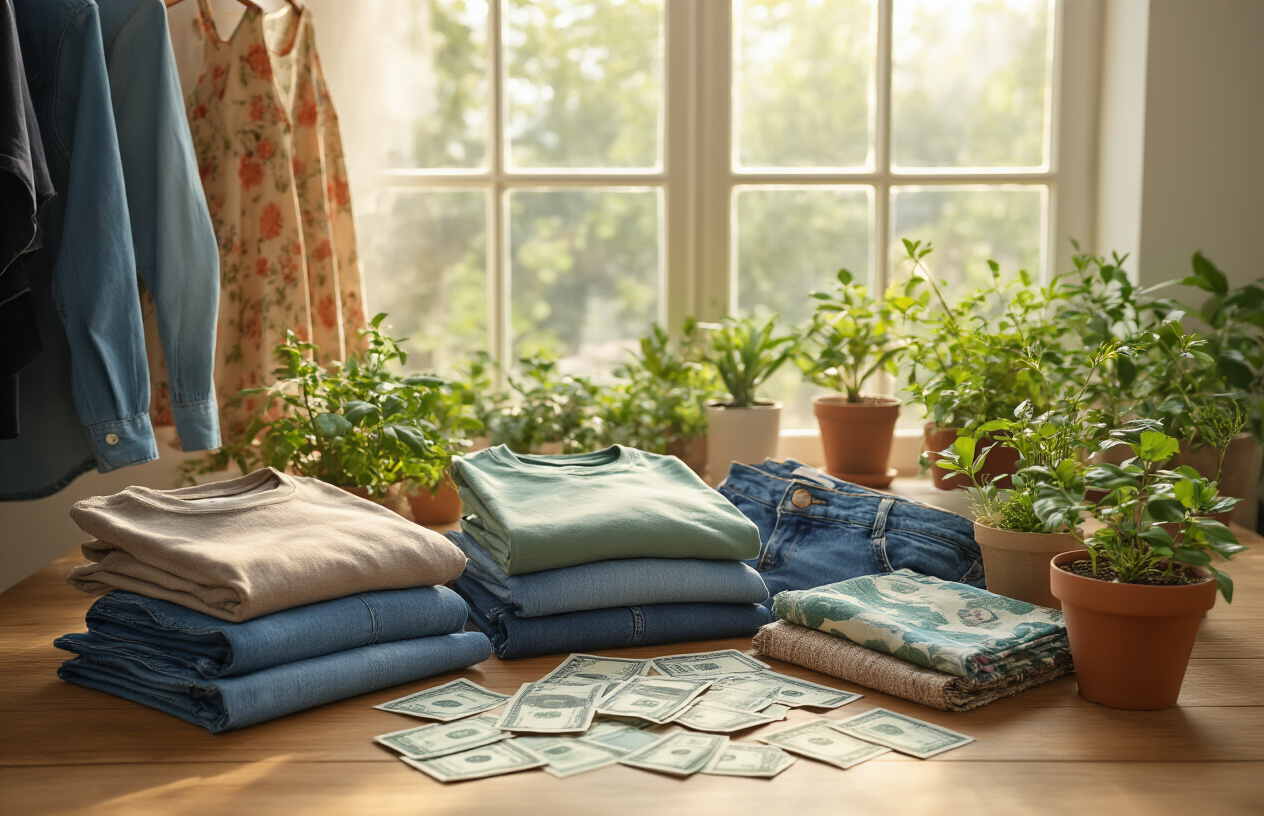
Sustainable fashion in India doesn’t have to break the bank, and several brands are proving this point every day. From quality materials to ethical production practices, these budget-friendly options offer real value beyond their price tags. While some brands might use clever marketing to appear more sustainable than they actually are, plenty of genuine players in the market are making fashion accessible and responsible at the same time.
The customer reviews speak for themselves – people are finding clothes that last longer, feel better, and align with their values, all while staying within a reasonable budget. If you’re thinking about making the switch, start small with one or two pieces from brands that have proven their commitment to sustainability. Your wallet and the planet will thank you for choosing quality over quantity, even when you’re shopping on a budget.


